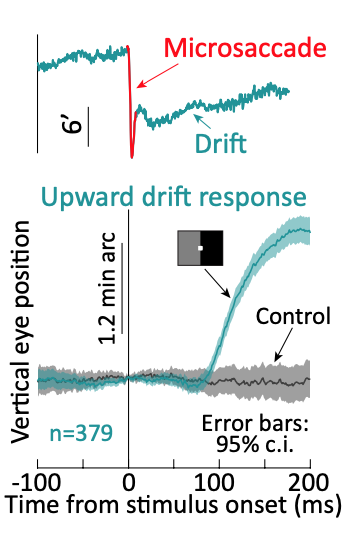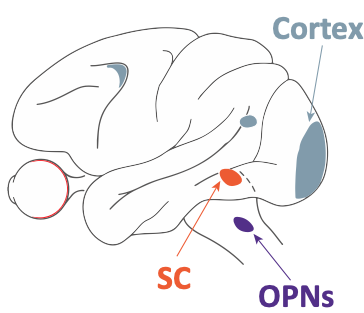
Our lab participated in this year’s European Conference on Visual Perception (ECVP), taking place in Cyprus. The conference has a long tradition, being organized since more than 40 years.
At this year’s conference, we tackled the neurophysiological mechanisms associated with slow ocular position drifts. These are tiny, slow changes in eye position (even smaller than microsaccades) that occur when we attempt to fix our gaze on a stationary point. It is not clear how these eye movements are generated. Moreover, a few years ago, we discovered that these drifts can be robustly stimulus-driven, reacting in a systematic manner to the onset of a visual image.

At the conference, we described our attempts at understanding this phenomenon. We performed extensive psychophysical experiments characterizing the feature tuning properties of the drift responses, kind of like we recently did for microsaccades.
We then performed neurophysiology in the superior colliculus (SC). Our initial thought was that the SC might control the directions of these drift responses. However, this was only partially true. So, we moved, instead, to neuronal recordings and electrical microstimulation studies in the SC and also downstream of it in the omnipause region of the oculomotor control network of the brainstem. Remarkably, we found evidence that the drift responses may indeed be mediated downstream of the SC. Our current goal is to exhaustively test these observations and then document them in a manuscript.

